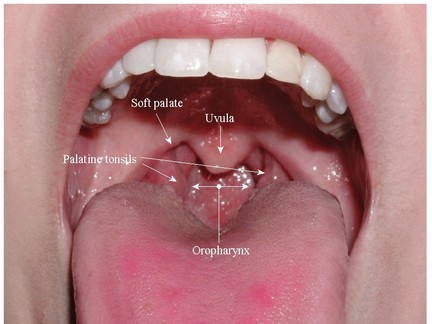Pain On Soft Palate

The soft palate, a frontier between the oral and nasal cavities, plays a crucial role in our ability to speak, swallow, and breathe. Pain in this region can be particularly distressing, as it can affect our ability to perform these vital functions. Understanding the causes, symptoms, and treatments of soft palate pain is essential for anyone experiencing discomfort in this sensitive area.
Introduction to the Soft Palate
The soft palate is a soft, flexible tissue at the back of the roof of the mouth. It is an integral part of the oral cavity and works closely with the uvula, a dangling piece of tissue, to separate the mouth from the nasal cavity. The soft palate is crucial for preventing food and liquids from entering the nasal cavity during swallowing and for modulating speech sounds.
Causes of Pain on the Soft Palate
Pain on the soft palate can arise from various factors, each with its unique characteristics and potential treatments:
Infections: Viral or bacterial infections, such as tonsillitis or pharyngitis, can cause inflammation and pain in the soft palate area. Symptoms often include fever, difficulty swallowing, and a sore throat.
Oral Thrush: A fungal infection caused by Candida, oral thrush can lead to white patches on the soft palate and other parts of the mouth, causing discomfort and pain.
Gastroesophageal Reflux Disease (GERD): Stomach acid flowing up into the throat can irritate the soft palate, leading to pain and discomfort. This is often accompanied by heartburn and a sour taste in the mouth.
Allergies: Seasonal allergies or sensitivities to certain foods can lead to postnasal drip, which may irritate the soft palate and cause pain.
Oral Cancer: Though rare, pain in the soft palate could be a symptom of oral cancer. It’s essential to seek medical attention if you experience unexplained and persistent pain or other symptoms like difficulty swallowing or a lump in the neck.
Trauma: Accidental bites or injuries during dental procedures can cause pain and swelling in the soft palate.
Symptoms of Soft Palate Pain
Symptoms can vary depending on the cause but often include:
- Pain or Soreness: This is the most common symptom, ranging from mild discomfort to severe pain.
- Difficulty Swallowing: Pain can make eating and drinking uncomfortable.
- Speech Changes: Inflammation or pain can affect the modulation of sounds, leading to changes in speech.
- Bad Taste or Smell: Infections can cause a persistent bad taste or smell in the mouth.
- White Patches or Redness: Visible signs of infection or irritation.
Diagnosis of Soft Palate Pain
Diagnosing the cause of soft palate pain involves a combination of physical examination, medical history, and sometimes, additional tests:
- Physical Examination: A healthcare provider will examine the mouth and throat, looking for signs of infection, inflammation, or other abnormalities.
- Endoscopy: A flexible tube with a camera may be used to visualize the upper digestive system.
- Biopsy: If cancer is suspected, a biopsy may be necessary to examine tissue samples.
- Imaging Tests: X-rays, CT scans, or MRIs can help identify structural issues or rule out other conditions.
Treatment Options for Soft Palate Pain
Treatment depends on the underlying cause:
- Infections: Antibiotics for bacterial infections or antifungal medications for fungal infections.
- GERD: Antacids, histamine-2 (H2) blockers, or proton pump inhibitors (PPIs) to reduce acid production.
- Allergies: Avoiding allergens, using nasal corticosteroids, or taking antihistamines.
- Oral Cancer: Surgery, radiation therapy, or chemotherapy, depending on the stage and location of the cancer.
- Trauma: Rest, ice, and over-the-counter pain relievers for minor injuries. More severe cases may require medical attention.
Prevention and Self-Care
While not all causes of soft palate pain can be prevented, maintaining good oral hygiene, avoiding irritants, and managing chronic conditions can reduce the risk:
- Regular Dental Check-Ups: To catch any oral health issues early.
- Healthy Diet: Avoiding spicy, acidic, or sharp foods that can irritate the soft palate.
- Stay Hydrated: To keep the mouth moist and help prevent infections.
- Avoid Tobacco and Alcohol: Both can increase the risk of oral cancer and other complications.
Conclusion
Pain on the soft palate can stem from a variety of sources, each requiring a tailored approach to diagnosis and treatment. By understanding these causes and taking proactive steps towards prevention and early intervention, individuals can mitigate discomfort and ensure the optimal functioning of this critical area of the mouth. If you’re experiencing persistent or severe pain, consulting a healthcare professional is the first step towards relief and recovery.
What are the common symptoms of soft palate pain?
+Common symptoms include pain or soreness in the soft palate area, difficulty swallowing, changes in speech, bad taste or smell, and visible signs of infection such as white patches or redness.
How is soft palate pain diagnosed?
+What are the treatment options for soft palate pain?
+Treatment depends on the cause and can include antibiotics for infections, antacids or H2 blockers for GERD, avoiding allergens for allergies, and surgery, radiation, or chemotherapy for oral cancer. Over-the-counter pain relievers and rest may be recommended for minor traumas.
Can soft palate pain be prevented?
+While not all causes can be prevented, maintaining good oral hygiene, avoiding irritants, managing chronic conditions like GERD, and not using tobacco or alcohol can reduce the risk of developing soft palate pain.
When should I seek medical attention for soft palate pain?
+Seek medical attention if you experience persistent or severe pain, difficulty swallowing, changes in speech, or if you suspect an infection that doesn’t improve with self-care. It’s also crucial to consult a healthcare professional if you have a history of oral cancer or are at risk.